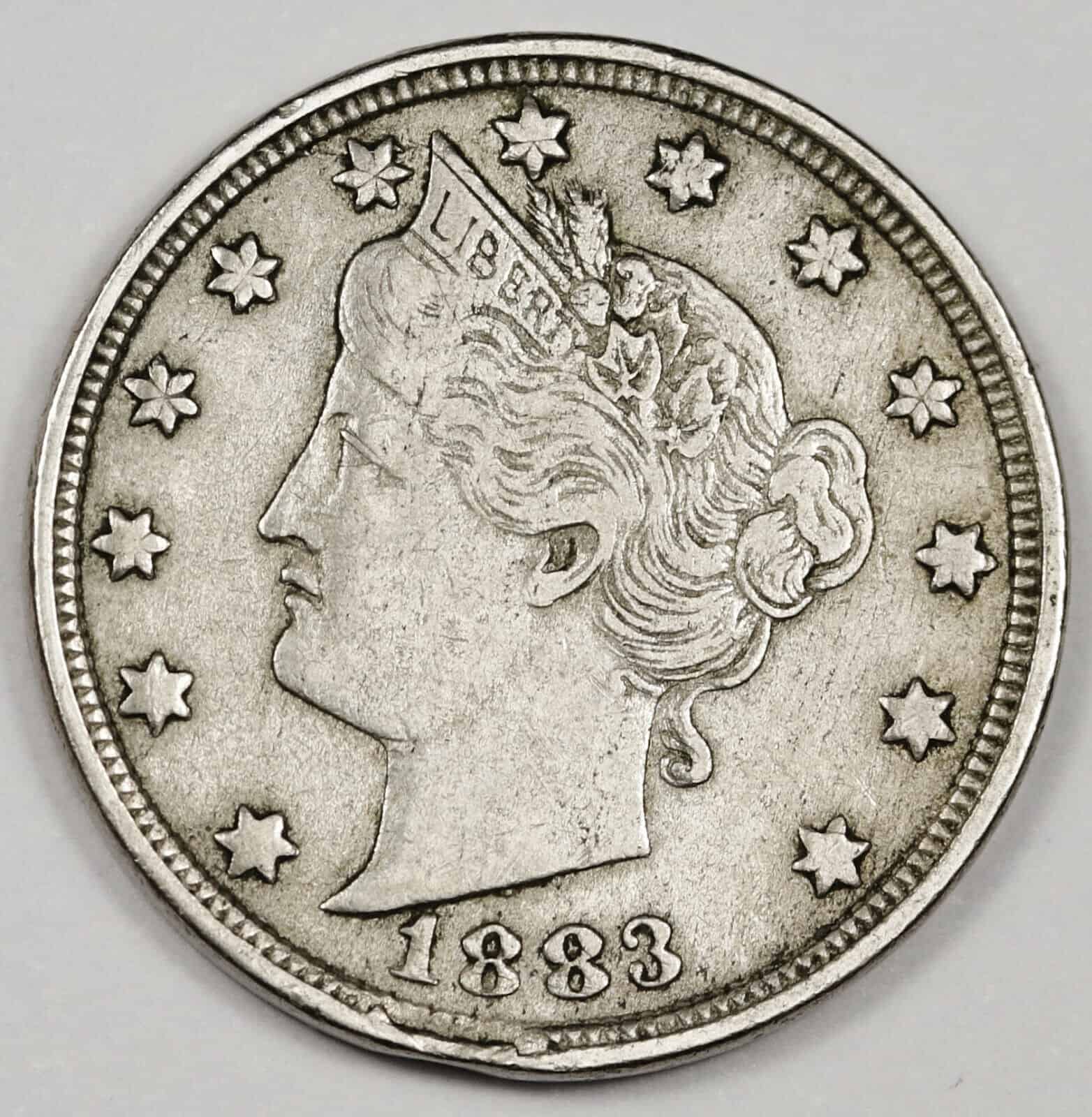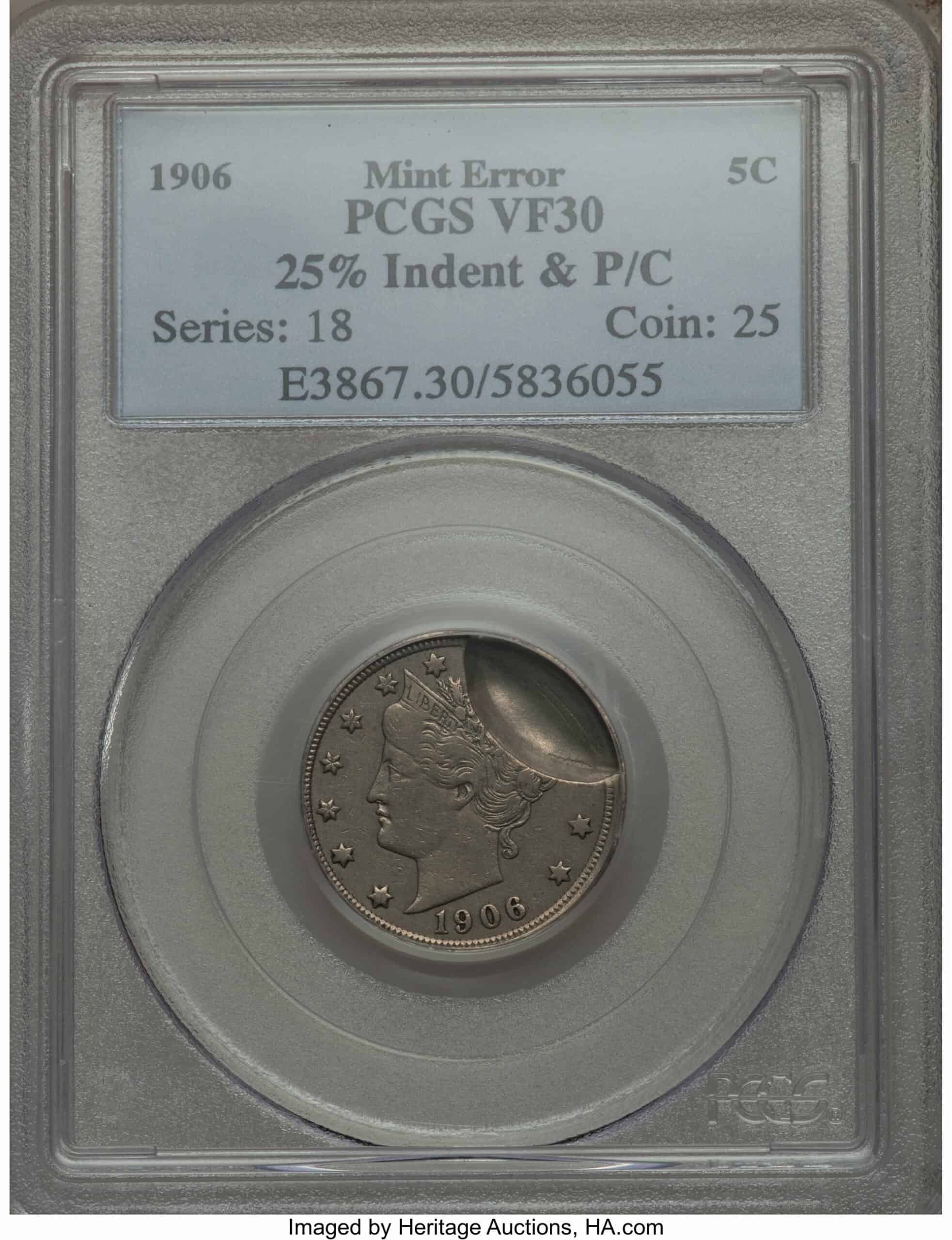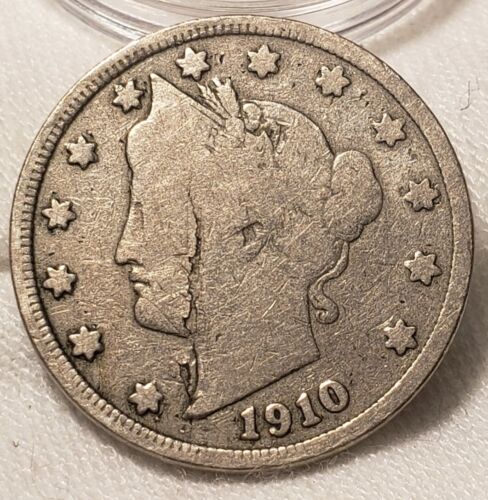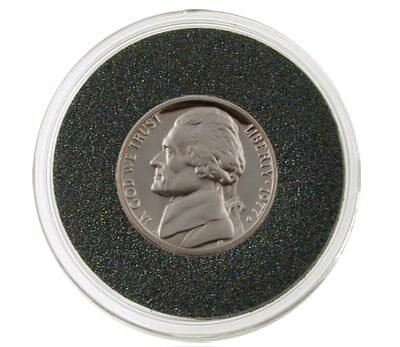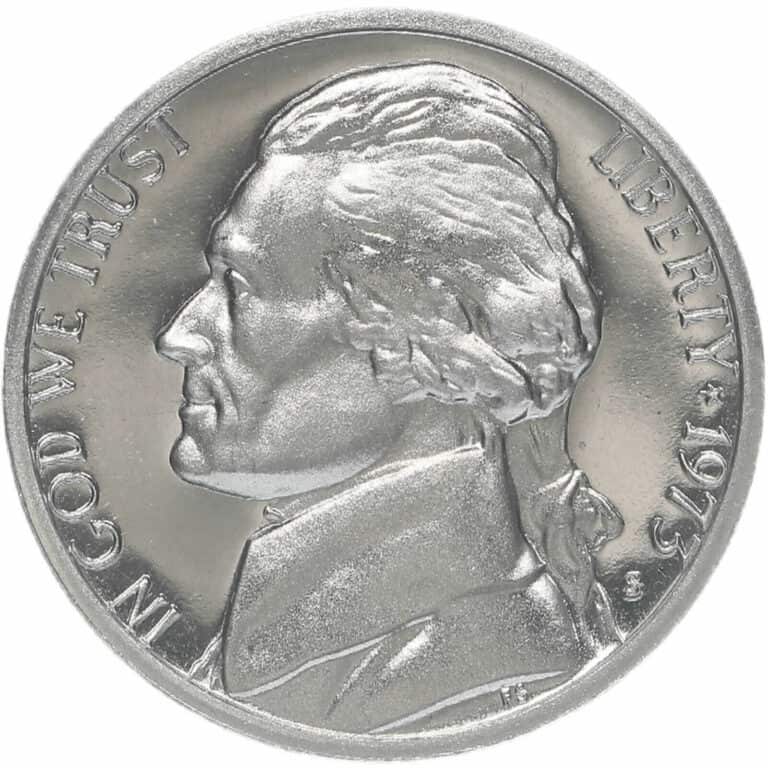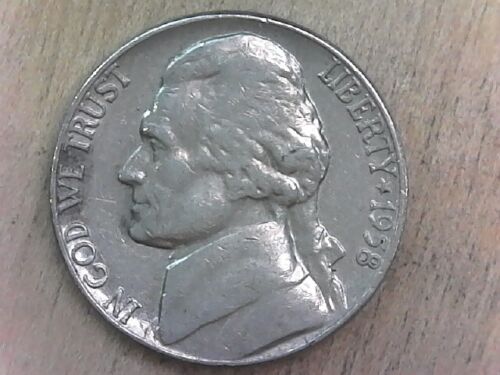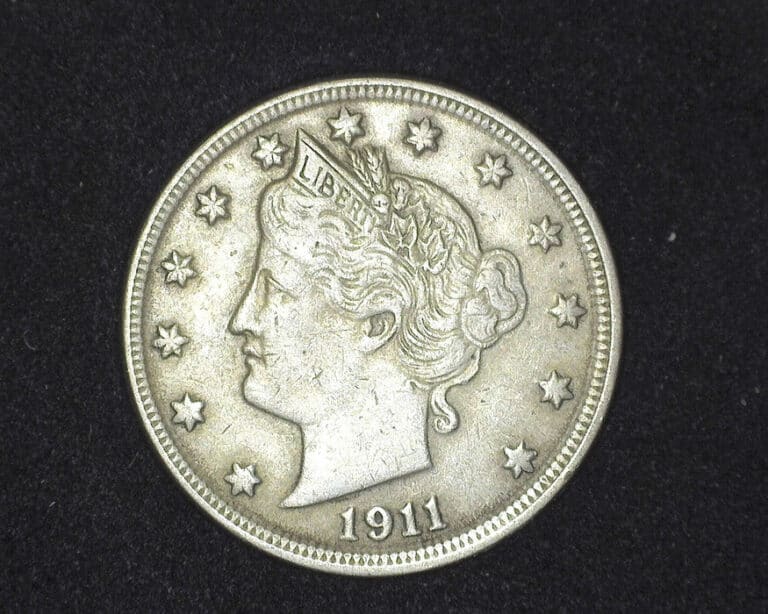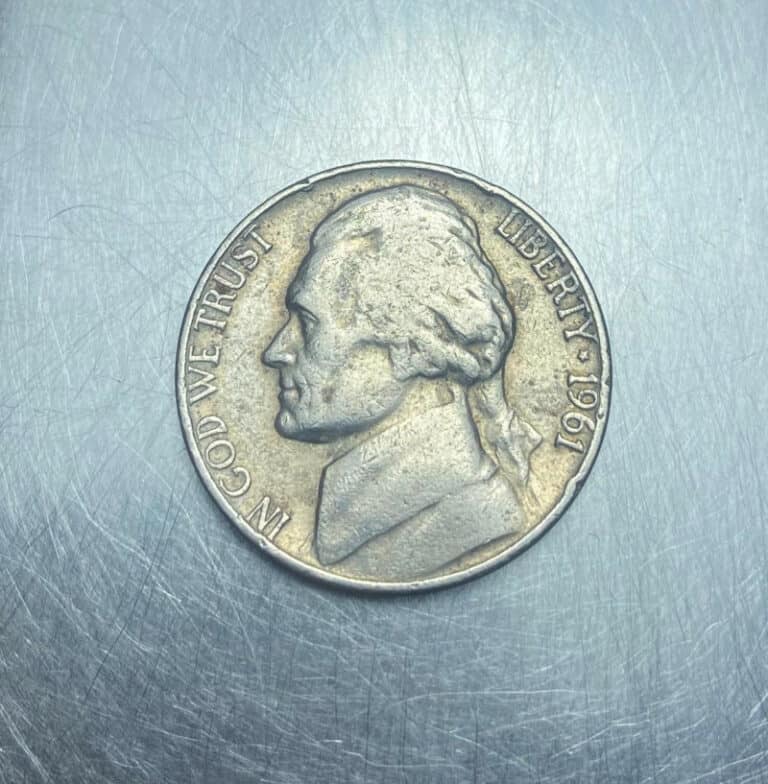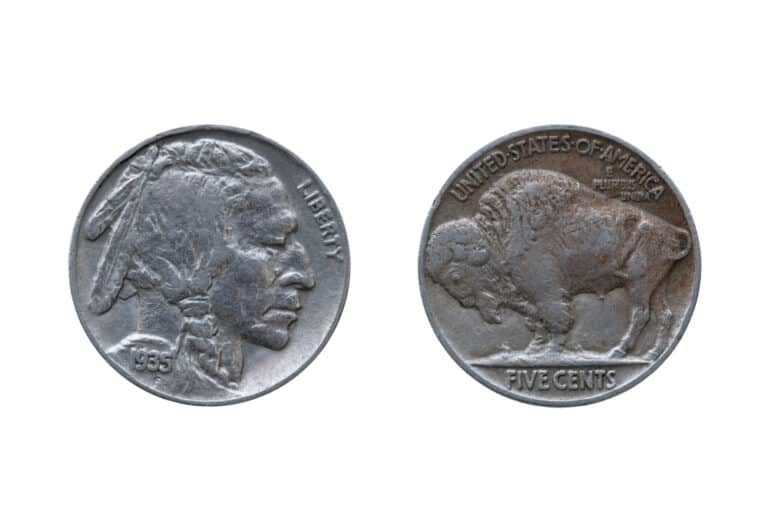V Nickel Value: How Much Is It Worth Today?
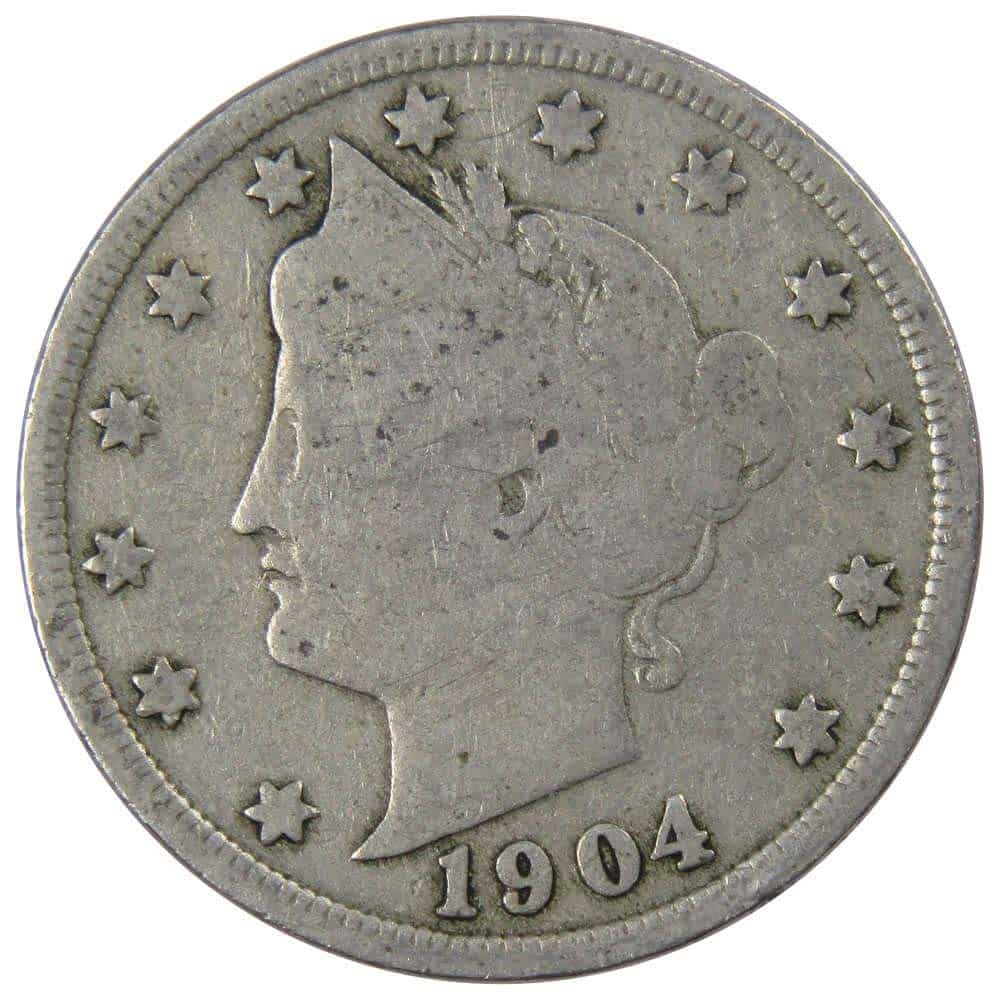
Today, we will explore the world of the Liberty Head nickel, also known as the “V” Nickel. This American five-cent coin was minted for almost 30 years, from 1883 to 1912, and its value has only increased with time. If you’ve ever wondered how much your Liberty nickel is worth today, you’re in luck—we’ve got the inside scoop on what you need to know!
This blog has a value chart listing the V Nickel value from different year mintage. We also have its history written on this page as well as errors you might find from this coin series. And if you thought that was exciting, wait until you hear about the rare and incredibly expensive 1913 Liberty Head Nickels.
V Nickel Value Details
- Category: Liberty Head Nickel
- Mints: No Mint Marks (except for 1912 D and S)
- Total Mintage: 601,462,270
- Obverse Design: Lady Liberty
- Reverse Design: Large V (Roman number 5) around an ornate wreath
- Designer: Charles Barber
- Edge: Plain
- Diameter: 21.2 mm
- Thickness: 1.95 mm
- Composition: 75% copper; 25% nickel
- Weight: 5 gr
V Nickel Value Chart
Below is a V Nickel Value chart as of 2023, which presents the estimated worth of V Nickels from different years of their mintage. Kindly note that these values are subject to change, so always consult professional coin grading for your rare coins.
Liberty Head V Nickel Value Chart |
||||||
| Date | Very Fine | Extremely Fine | Almost Uncirculated | Mint State | Proof | Mintage |
| 1883 No Cents |
$14.58 |
$19.44 |
$48.60 |
$2,750 |
$2,130 |
5,474,300 |
| 1883 With Cents | $84 | $113
|
$156 | $3,750 | $2,100 | 16,026,200 |
| 1884 | $87 | $130 | $218 | $14,400 | $1,670 | 11,270,000 |
| 1885 | $1,460 | $1,650 | $2,620 | $55,200 | $11,300 | 1,472,700 |
| 1886 | $663 | $827 | $1,150 | $72,000 | $2,750 | 3,326,000 |
| 1887 | $71 | $113 | $148 | $12,000 | $3,130 | 15,260,692 |
| 1888 | $172 | $234 | $328 | $11,200 | $2,250 | 10,167,901 |
| 1889 | $75 | $122 | $203 | $14,400 | $2,810 | 15,878,025 |
| 1890 | $58 | $97 | $172 | $14,400 | $4,500 | 16,256,532 |
| 1891 | $55 | $97 | $172 | $15,000 | $4,500 | 16,832,000 |
| 1892 | $58 | $97 | $172 | $1,880 | $3,750 | 11,696,897 |
| 1893 | $55 | $97 | $148 | $19,200 | $1,880 | 13,368,000 |
| 1894 | $242 | $328 | $468 | $14,400 | $2,190 | 5,410,500 |
| 1895 | $58 | $97 | $179 | $25,800 | $4,500 | 9,977,822 |
| 1896 | $105 | $172 | $226 | $14,400 | $4,060 | 8,841,058 |
| 1897 | $37.26 | $65 | $109 | $15,600 | $1,580 | 20,426,797 |
| 1898 | $37.26 | $81 | $148 | $10,500 | $1,580 | 12,530,292 |
| 1899 | $21.06 | $48.60 | $94 | $4,690 | $1,750 | 26,027,000 |
| 1990 | $21.06 | $48.60 | $91 | $5,400 | $10,000 | 27,253,733 |
| 1901 | $21.06 | $48.60 | $91 | $7,500 | $11,000 | 26,478,228 |
| 1902 | $21.06 | $48.60 | $91 | $6,880 | $1,810 | 31,487,561 |
| 1903 | $21.06 | $48.60 | $91 | $6,000 | $10,000 | 28,004,935 |
| 1904 | $21.06 | $48.60 | $91 | $9,380 | $2,550 | 21,403,167 |
| 1905 | $21.06 | $48.60 | $91 | $6,300 | $10,000 | 29,825,124 |
| 1906 | $21.06 | $48.60 | $91 | $1,250 | $1,580 | 38,612,000 |
| 1907 | $21.06 | $48.60 | $91 | $16,600 | $1,580 | 39,213,325 |
| 1908 | $21.06 | $48.60 | $91 | $14,400 | $10,000 | 22,684,557 |
| 1909 | $21.06 | $48.60 | $91 | $12,600 | $10,000 | 11,585,763 |
| 1910 | $21.06 | $48.60 | $91 | $7,500 | $1,890 | 30,166,948 |
| 1911 | $21.06 | $48.60 | $91 | $10,600 | $10,000 | 39,557,639 |
| 1912 | $21.06 | $48.60 | $91 | $1,090 | $10,000 | 26,234,569 |
| 1912 D | $73 | $172 | $343 | $26,400 | – | 8,474,000 |
| 1912 S | $858 | $1,500 | $2,060 | $8,750 | – | 238,000 |
| 1913 | – | – | – | – | $6,480,000 | 5 |
V Nickel Value History

The V Nickel, also known as the Liberty Head Nickel, was created in 1883 by Charles E. Barber. It featured a prominent V on the back, indicating its value of five cents. The V Nickel had “E PLURIBUS UNUM” instead of “CENTS” in its first-year mintage in 1883 but was discontinued due to vulnerability to fraudulent changes. The US Mint later added the word to clear up any misunderstandings. The Liberty Nickel with this modification is common, except for the rare top-quality gems.
The United States Mint produced two varieties of Liberty Head nickels in 1883: the no-CENTS and with-CENTS. The no-CENTS variety was only produced briefly, and fewer coins were minted compared to the with-CENTS variety. However, despite the lower mintage (5,474,300), the no-CENTS variety is less expensive than the with-CENTS variety because many were saved by the public, resulting in a larger supply of high-grade coins.
No-CENTS Liberty nickels from 1883 can be purchased for $3.38 to $14.58 in lower grades and for less than $2,750 in uncirculated or mint state grades. On the other hand, the With-CENTS Liberty nickels from 1883 are more expensive, with a worth of around $10.80 to $84 in low-circulated grades and up to $3,750 in uncirculated grades.
Therefore, the main difference between the two varieties is the absence or presence of the word “CENTS” on the reverse side of the coin, and the price difference is due to the lower availability of high-grade With-CENTS nickels compared to No-CENTS nickels.

Talking back about its design, on the obverse (front) side of the V Nickel is a left-facing profile of Lady Liberty. She is wearing a coronet with the word “LIBERTY” inscribed on it, and a wreath is visible in her hair. The design is raised, giving it a three-dimensional effect.
On the reverse (back) is a large “V” with a wreath around it. The “V” stands for the Roman numeral for five, indicating the coin’s value. The words “UNITED STATES OF AMERICA” and “E PLURIBUS UNUM” were initially inscribed around the coin’s edge. However, in later versions of the coin, these phrases were stretched along the top, with “CENTS” inscribed below the wreath.
There are thirteen stars around the design, representing the original thirteen states of the United States. Finally, the coin’s date is inscribed at the bottom of the reverse side.
This design of the V Nickel then remained largely unchanged for 30 years, and it was widely used until 1912. However, only five V nickels were produced in 1913, making them incredibly rare and valuable today. The majority of them were minted in Philadelphia except in 1912, where two main mint locations in the US also struck a variation of this coin.
Some of the most valuable V Nickels are the ones from 1885 and 1886, which are difficult to find in good condition. The 1912 S V nickel is also highly valued because only 238,000 were made, making it the one with the lowest number produced for business use. Additionally, the 1912 D from Denver and 1912 S V nickels from San Francisco are unique in the coin series because they feature a special mark.
The 1913 Liberty V Nickel is considered one of American history’s rarest and most valuable coins. Only five of these coins were ever minted, making them highly treasured among collectors. The 1913 Liberty Nickel is unique in that it was not authorized by the United States Mint, and no record exists of its production.
Due to its rarity, the 1913 Liberty Nickel has fetched high prices at auction. On January 10th, 2010, one with a grade of PR64 by NGC was sold at Heritage Auctions for an impressive $3,737,500!
Another 1913 5C Liberty nickel was sold at Heritage Auctions on April 28th, 2013. This coin was graded PR63 by PCGS and was also in excellent condition. It sold for $3,172,500. One could only imagine how much the remaining three 1913 V Nickel would be worth if they were to be sold in auctions today.
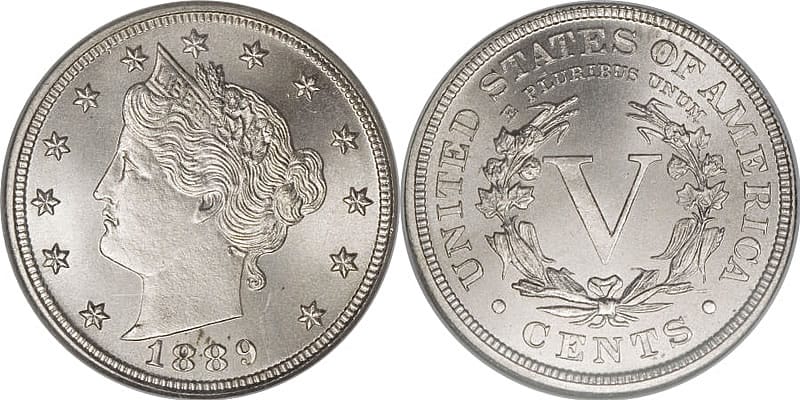
V Nickel Value Grading
Watch this video to learn how V nickel grading affects the coin’s value. Grades range from AG 3, indicating heavy wear, to MS 60+, indicating no wear at all on high points and uninterrupted luster.
The higher the grade, the more valuable the coin, with each grade having specific requirements for the visibility of Liberty, hair, wreath, and ear of corn on the coin.
Rare V Nickel Error Lists
1. V Nickel Broadstrike Error
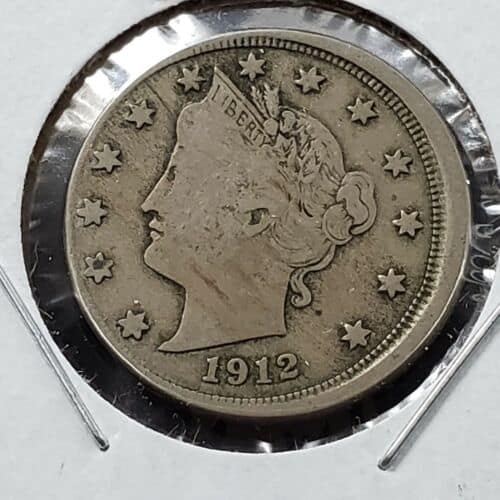
Broad strike error in V Nickels happens when a coin is struck outside the boundaries of the collar die, a component of the minting press that helps shape the coin’s edge. When a V Nickel coin is struck without the collar die, the metal expands outward, resulting in a larger-than-intended coin with a broad, flattened edge.
2. V Nickel Brockage Error
The brockage error is a type of error that can occur during the minting process of coins, including V nickels. The result is a negative or mirror image of the previously struck coin on the new blank planchet. This can happen with both obverse and reverse designs of the V Nickel coin.
3. V Nickel Clipped Planchet Error
A planchet is a blank metal disc that will eventually be minted into a V Nickel. During the blank-punching process of making coins, accidents can occur where a steel rod overlaps with a previously punched portion of the metal strip. This can cause a portion of the metal strip to be clipped or cut off, resulting in an incomplete planchet of the V Nickel.
The clipped portion can take on various shapes, such as curved, straight, ragged, incomplete, or elliptical, depending on the location and angle of the steel rod during the blank-punching process.
4. V Nickel Indent Error
An indentation error can occur in V Nickel coins due to overlapping two spaces or dies. This creates a visible depression on the coin’s surface, which is considered a defect and can impact the V Nickel value.
In addition, a rare type of indentation mistake occurs when a space intended for a particular denomination coincides with a space designed for another denomination, creating distinctive V Nickel errors.
5. V Nickel Lamination Error
The process of creating a V Nickel involves rolling a strip of metal until it reaches the desired thickness, but foreign substances may get stuck in the strip during this process, causing a defect known as a lamination error. This can result in flaws in the metal strip that may detach from the coin’s surface, creating a depression or void and affecting the V Nickel value.
The range of errors found in V Nickels is not limited to the list mentioned above. To explore more such errors, you can check out this video that highlights the top 7 most valuable variations in this coin series.
V Nickel Value FAQs
Q1: What’s the most valuable V nickel?
The most valuable V nickel is the 1913 Liberty Head V nickel, but numerous nickels from different years also hold significant value. Some other valuable years for nickels include 1880, 1885, 1919, 1920, 1926, 1927, 1936, 1937, 1942, and 1964 V Nickels.
Q2: Where is the mint mark on V Nickel?
The mint marks in V nickels are located on the coin’s reverse side, specifically on the lower right side. The V nickels were produced at three different mints: Philadelphia, Denver, and San Francisco. The Philadelphia Mint had no mint mark, while the Denver Mint used the letter “D,” and the San Francisco Mint used the letter “S” as their mint marks.
So, if you want to identify where a V nickel was produced, you should look for the mint mark on the V Nickel’s reverse side.
Final Words
Congratulations! You’re now equipped with the knowledge to make well decisions about buying and selling coins by understanding the factors that influence the V Nickel value and potential errors to look for. But don’t stop here! Keep up with the latest coin reviews to stay ahead of the coin-collecting game.
